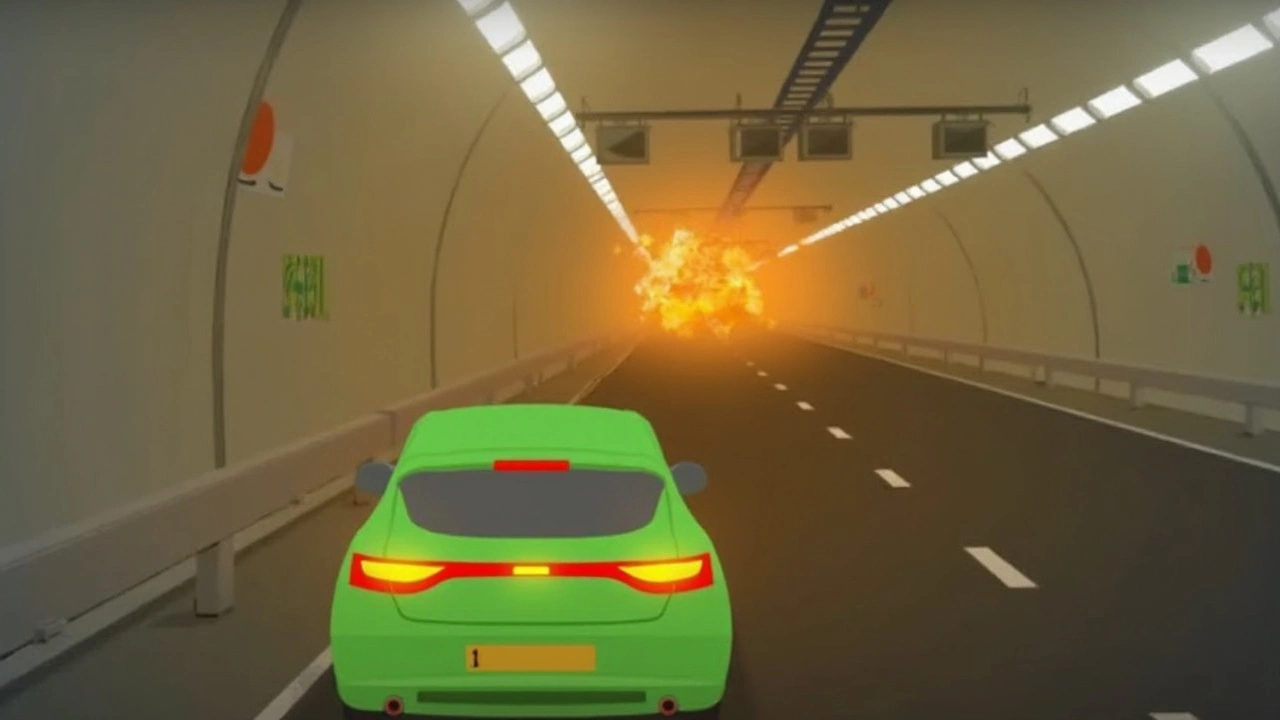How to Respond When a Fire Breaks Out in a Tunnel
If you’re driving through a tunnel and spot fire or thick smoke, your decisions in the next few moments can mean the difference between safety and disaster. Tunnel fires bring an extra level of risk because confined spaces can fill with toxic fumes fast, and escape routes are limited.
The number one rule? Evacuate as soon as you realize you can’t safely drive out. Switch on your hazard lights right away—even if your car seems fine at first—and try to get out of the tunnel. If traffic is blocked or flames are already closing in, steer your vehicle to the left side. Don’t waste time grabbing your belongings. Turn off the engine, leave your keys in the ignition so emergency crews can move your car if needed, and head for the nearest exit sign or emergency shelter on foot. Stick to the marked escape routes—they’re designed to lead you out safely, even if visibility drops.
There’s a hard rule here: never turn back or re-enter the tunnel for any reason once smoke or flames are behind you. People sometimes think they can rescue an item or help from inside, but this puts you right in harm’s way. Toxic gas from burning materials spreads quickly and can be deadly.

Keeping Passengers Safe and Navigating Tunnel Emergencies
For coach and bus drivers, the safety of every passenger is your top responsibility. As soon as trouble begins, start evacuating passengers methodically. Make sure wheelchair users and people with disabilities are helped last only if they have dedicated aides, to avoid crowding and confusion at the exits. Move everyone toward designated safe areas—these can be emergency shelters or marked escape doors, which are never far apart in modern tunnels.
If you need help or can’t call emergency services directly because mobile signals don’t work deep in tunnels, use an SOS phone at an evacuation point. These phones connect you straight to tunnel operators and let rescue teams pinpoint exactly where you are.
If you spot another vehicle ablaze up ahead, keep a safe distance and stop well over to the side. Give those behind a chance to pass and keep emergency lanes clear—fire trucks and ambulances can’t afford to be held up by blocked lanes. Don’t attempt to put out a fire yourself unless you’re trained; extinguishers are available in clearly marked emergency panels, but they are really meant for small fires or to help hold back flames until help arrives.
Breakdowns in tunnels can cause panic, especially if there’s already an emergency. The playbook here is similar: activate hazard lights, leave the car if possible, and reach an emergency call point for assistance. Never sit and wait inside your car if smoke or fire is detected nearby.
Sometimes tunnel traffic comes to a standstill—maybe because of an incident or even routine congestion. Refuse the urge to exit your vehicle and walk unless authorities direct you to. Always keep your hazard lights flashing and listen for messages over loudspeakers or watch the signs; tunnel operators will keep you informed with real-time updates. Their guidance is your lifeline in confusing situations.
Throughout your time in a tunnel, pay close attention to signs, lane restrictions, and evacuation points. These aren’t just there for show—they’re lifelines designed to get everyone out safely in emergencies. If you expect to drive through tunnels regularly, take a few minutes to study the evacuation maps, location of tunnel fire safety equipment, and emergency exits. The extra knowledge could save your life if the unthinkable happens.
